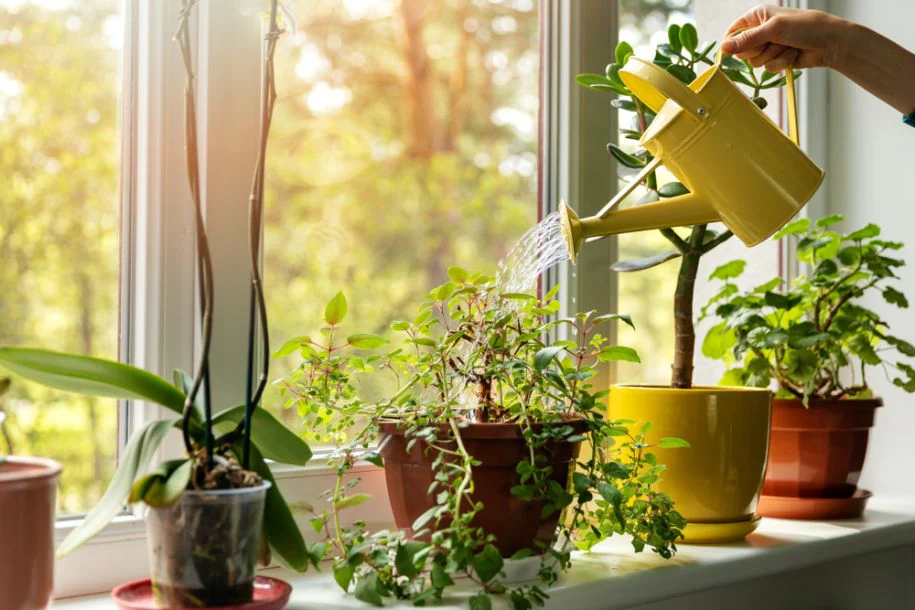In recent years, indoor gardening has surged in popularity, and for good reason. Bringing greenery into your home not only enhances its aesthetic appeal but also improves air quality and promotes well-being. Whether you’re a seasoned plant enthusiast or a beginner looking to add a touch of nature to your living space, here’s a guide to the art of indoor gardening, complete with tips and tricks to create your own green oasis.
1. Choosing the Right Plants
The first step in indoor gardening is selecting the right plants for your space. Consider factors such as lighting, humidity, and the amount of care you’re willing to provide. Here are a few popular options:
- Snake Plant (Sansevieria): Known for its air-purifying qualities, this hardy plant thrives in low light and requires minimal watering.
- Pothos (Epipremnum aureum): A fast-growing vine that’s perfect for beginners, pothos can adapt to a variety of light conditions and is forgiving if you forget to water occasionally.
- ZZ Plant (Zamioculcas zamiifolia): With its glossy leaves and resilience to neglect, the ZZ plant is ideal for low-light areas and busy lifestyles.
- Peace Lily (Spathiphyllum): This beautiful flowering plant thrives in low light and adds a touch of elegance while improving indoor air quality.
Tip: Start with a mix of low-maintenance plants to build your confidence before experimenting with more demanding varieties.
2. Understanding Light Conditions
Light is one of the most crucial factors for successful indoor gardening. Different plants have varying light requirements, so it’s important to assess the natural light in your home. Here’s a quick guide:
- Low Light: Choose plants like snake plants and ZZ plants that thrive in shade or indirect light.
- Medium Light: Plants such as pothos and peace lilies do well in areas with filtered sunlight.
- Bright, Indirect Light: Succulents and ferns flourish in bright, indirect sunlight; however, be cautious with direct sunlight, as it can scorch leaves.
Tip: Use sheer curtains to diffuse harsh sunlight, creating a more suitable environment for your plants.
3. Creating a Care Routine
Once you’ve selected your plants, establishing a care routine is essential for their health and longevity. Here are some key aspects to consider:
- Watering: Overwatering is a common mistake. Always check the soil moisture before watering; many plants prefer to dry out slightly between waterings.
- Humidity: Many houseplants thrive in higher humidity. Consider misting your plants or placing a humidifier nearby, especially in dry winter months.
- Fertilizing: During the growing season (spring and summer), feed your plants with a balanced liquid fertilizer every few weeks to promote healthy growth.
Tip: Keep a care journal or set reminders on your phone to help you remember watering schedules and care tasks.
4. Designing Your Indoor Garden
The placement of your plants can greatly affect both their health and the overall aesthetic of your home. Here are some design ideas:
- Plant Shelves: Utilize vertical space by installing shelves to display your plants at different heights, creating a lush, layered look.
- Hanging Planters: Use macramé hangers or stylish hooks to suspend plants from the ceiling, drawing the eye upward and adding dimension to your decor.
- Corner Displays: Group plants of varying heights and textures in a corner to create a vibrant focal point.
Tip: Experiment with different arrangements until you find the layout that best complements your space.
5. Adding Personal Touches
Indoor gardening is not just about plants; it’s also an opportunity to express your personal style. Incorporate decorative pots, plant stands, and gardening accessories that reflect your aesthetic. You can also add elements like fairy lights around your plants or create a themed display (like a succulent garden) to make your indoor oasis uniquely yours.
Tip: Rotate your plants occasionally to ensure they receive even light exposure and keep your space feeling fresh.
Conclusion
Indoor gardening is a rewarding and fulfilling hobby that can bring life to your home and enhance your well-being. By choosing the right plants, understanding their care needs, and creating a beautiful display, you can cultivate your very own green sanctuary. Embrace the art of indoor gardening, and enjoy the many benefits that come with nurturing plants in your living space!




